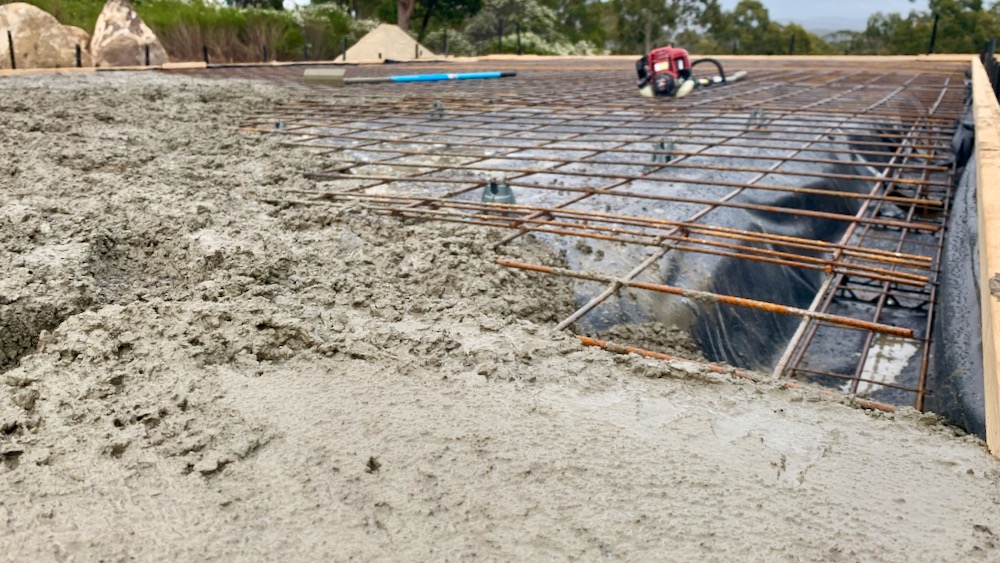the first step was the levelling and preparing the basis of the slab. that turned out to be already quite a bit more difficult than everyone hoped it would be, mainly due to the number of massive rocks that turned in the area.

while that slowed down the work on the slab it supplied the rocks for the amazing retaining wall behind it. next was a moisture barrier under the concrete pad, and the timber frame that helps give the slab its shape.

a lot of work then goes into the steel reinforcements: there is a frame that runs through the beam on the outside of the slab, all of the parts are connected, and the corners are reinforced.

the center part is also reinforced with steel mesh and i can attest to the fact that it takes quite a bit of time to tie all the pieces together: i helped (it’s the kind of job unskilled people can do).

when the wet concrete hits the slab is when everyone starts working frantically (and unskilled labour is no longer tolerated on the site). concrete hardens relatively quickly (depending on the outside temperature and moisture among other things) and mistakes can quickly become very expensive.

and then the concrete is -for want of a better work: massaged, for hours. first the wet concrete is formed into a rough but perfectly flat shape. then, once the surface has become hard enough, it is polished. by hand, with a machine (called a helicopter because it looks like an inverted one) and then some more by hand. for hours … really.

until it is perfectly flat, perfectly level and perfectly smooth. i definitely have a completely new appreciation for the work that goes into a well-made slab. next we need is walls, a roof and then it’s time for lots of solar panels and a battery.
